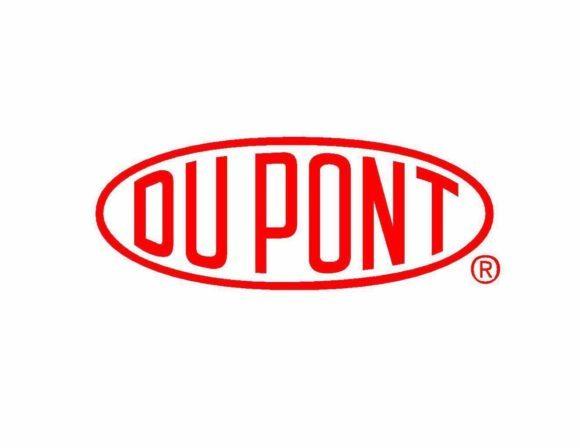The U.S. Chemical Safety Board says the deaths of four workers at a chemical plant in Texas in 2014 were the result of a long list of safety failures in the plant’s operations.
The CSB has released its final investigation report into the Nov. 15, 2014, methyl mercaptan release at the DuPont Plant in La Porte, Texas, that killed four workers. The report includes key lessons related to emergency planning and response, process safety management systems, and process safety culture.
“Our investigation revealed a long chain of failures which resulted in this fatal event, including deferring much needed process improvements; improvements that could have prevented the toxic release,” said Interim Executive Dr. Kristen Kulinowski in a media release.
In the middle of the night on Nov. 15, 2014, nearly 24,000 pounds of deadly methyl mercaptan escaped through two valves in a poorly ventilated manufacturing building at DuPont’s La Porte facility. For several days leading to the incident, operations personnel attempted to clear blocked piping outside of the manufacturing building. In response to what personnel believed was a routine, unrelated pressure problem, two workers went to drain liquid from piping inside the manufacturing building.
Unfortunately, the pressure problem was actually related to the clearing activities. Liquid methyl mercaptan drained from the piping, filling the manufacturing building with toxic vapor. Although one of the workers made a distress call, both died, unable to escape from the building. Four additional operators responded to the distress call and entered the manufacturing building. Two of those workers succumbed to the toxic vapor, while two others survived.
Lead Investigator Tamara Qureshi said, “The CSB’s investigation determined that the cause of the toxic chemical release was a flawed engineering design and the lack of adequate safeguards. Contributing to the severity of the incident were numerous safety management shortcomings including deficiencies in formal process safety culture assessments, auditing and corrective actions, and troubleshooting operations.”
The CSB’s investigation identified weaknesses in the DuPont La Porte safety management system, which failed to a strong process safety culture.
Although this facility has since been closed, the incident offers important lessons for the chemical industry, relating to the following areas:
- Emergency Response: The emergency response efforts at the La Porte facility were disorganized and placed operators, emergency responders, and potentially the public at risk. Chemical plants need a robust emergency response program to mitigate emergencies and protect the health of workers, emergency responders, and the public.
- DuPont’s Process Safety Management System: While DuPont created its own corporate process safety management system, the investigation found that the DuPont La Porte site did not effectively implement it, nor did it formally evaluate its process safety culture before the November 2014 incident. Assessing safety culture is critical to effectively gauging process safety.
- DuPont La Porte’s Process Safety Management Deficiencies: DuPont’s corporate process safety management system did not identify, prevent, or mitigate significant process safety deficiencies at the DuPont La Porte facility that contributed to the incident. A company must effectively implement a process safety management system and its corresponding programs to reap the accompanying process safety benefits.
- DuPont La Porte’s Employee Incentive Program: The DuPont La Porte bonus structure may have disincentivized workers from reporting injuries, incidents, and “near misses.” Ensuring that employees can report injuries or incidents in accordance with regulations, without fear of discrimination, retaliation, or other adverse consequence is central to protecting worker safety and health, and aiding accident prevention.
The CSB’s final report includes recommendations to the DuPont LaPorte Chemical Facility and Local 900C of the International Chemical Workers Union Council (ICWUC) of the United Food and Commercial Workers (UFCW).
Dr. Kulinowski said, “Process safety management is a critical tool for safe and efficient operations at any facility. This is a textbook example of the catastrophic consequences when process safety management is inadequately implemented and monitored.”
The CSB is an independent, non-regulatory federal agency whose mission is to drive chemical safety change through independent investigations to protect people and the environment. The agency’s board members are appointed by the President and confirmed by the Senate.
The report may be found online at: https://www.csb.gov/assets/1/6/DuPont_LaPorte_Final_Report.pdf
Source: U.S. Chemical Safety Board
Related:
- 4 Workers Dead after Leak at Texas Chemical Plant
- Texas Chemical Plant Workers Died from Accidental Asphyxiation
- Chemical Leak at DuPont Plant in Texas Spurs Wrongful Death Suit
Topics Texas Manufacturing Chemicals
Was this article valuable?
Here are more articles you may enjoy.



 Allstate Seeking 34% Rate Hike on California Homeowners Insurance
Allstate Seeking 34% Rate Hike on California Homeowners Insurance  CSU Research Team Increases Atlantic Hurricane Forecast
CSU Research Team Increases Atlantic Hurricane Forecast  Insurance Industry Impact From Hurricane Beryl Expected to Be ‘Manageable’
Insurance Industry Impact From Hurricane Beryl Expected to Be ‘Manageable’  Progressive to Pay $48M to New York Drivers Over Underpaid Total Loss Claims
Progressive to Pay $48M to New York Drivers Over Underpaid Total Loss Claims 

